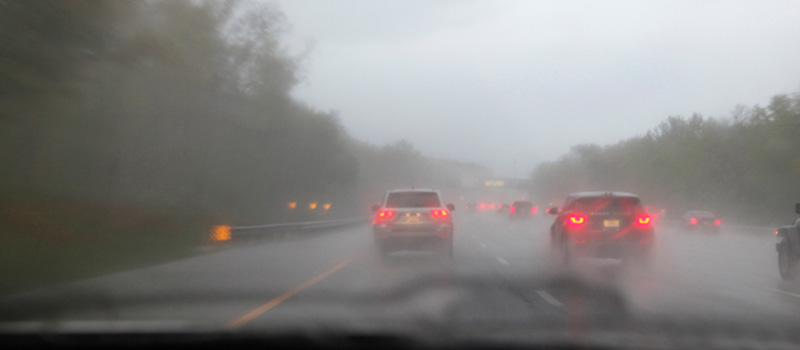Essential Driving Tips on Safely Navigating Fog and Reduced Visibility
Essential Driving Tips on Safely Navigating Fog and Reduced Visibility

Essential Driving Tips on Safely Navigating Fog and Reduced Visibility
Driving in the fog can be a challenging and dangerous experience. Reduced visibility makes it harder to see other vehicles, pedestrians, and obstacles. According to the U.S. Department of Transportation (DOT), over 38,700 crashes occur under foggy conditions each year. To ensure your safety and that of others, it’s important to adjust how you drive when visibility is low.
Learn a few tips that could help you reduce the risk of an accident when driving in these types of conditions.
Slow Down
Fog can reduce visibility to a few feet, making it difficult to see what’s ahead or have an accurate perception of movement. Slow down and increase the distance between you and the vehicle in front of you. This will give you more time to react. Avoid sudden braking, acceleration, or turning; these actions can cause you to lose control of your vehicle. Remember that it’s better to be late than to put safety at risk.
Use Your Wipers and Defroster
Fog can cause moisture to accumulate on windshields, making it even harder to see. Use your windshield wipers and defroster to clear moisture from the glass and improve visibility.
Turn On Your Lights
When driving in the fog, use your headlights to brighten the road and help other drivers see you. Avoid using your “brights” (or high beams); they can reflect off the fog and create glare. If you need to pull over to the side of the road, use your hazard lights to ensure that other drivers see you.
Use Your Turn Signals
Use turn signals to indicate your intentions to fellow drivers and pedestrians, especially when changing lanes or turning at intersections. Make sure your turn signals and brake lights work properly before driving in the fog.
Stay in Your Lane
It can be difficult to see other vehicles on the road, so avoid passing or changing lanes. Ideally, you should stay in your lane to reduce the risk of hitting something you can’t see. If you need to change lanes, use your turn signal and move over very slowly.
Drive Defensively
Fellow drivers may be just as challenged by the fog as you are (or more!). Keep an eye out for other vehicles, pedestrians, and obstacles on the road. Be prepared to react quickly if necessary, but try to avoid any sudden shifts in direction or speed. Be extra cautious when turning or changing lanes; other drivers may be hard to see and might not be using their headlights.
Use Your GPS or Navigation System
You may miss the usual landmarks in the fog, which might make you feel rushed to make a last-second turn or change lanes quickly. Use a GPS or navigation system to help guide you when it’s foggy outside—even if you are familiar with the route to your destination. Turn on the voice navigation feature so that you can keep your eyes on the road and still stay on track.
Pull Over if Necessary
It’s important to recognize your limits and prioritize safety over optimism. If the fog is too thick to continue driving safely, pull over to the side of the road and activate your hazard lights. Wait until visibility improves before continuing your journey.
Content on this page is designed for general information and/or entertainment purposes. It is not intended to provide legal or any other type of advice and is not meant to be a thorough discussion of every issue that a person should consider or may encounter. Unless expressly referenced, we are not affiliated with any company or app that may be referenced herein and we do not endorse them. We are not responsible or liable for the user's reliance on this content or for the availability of links to other websites or resources, or for advertising, products, services or other materials on or available through these websites or resources. Any reference to third party rates or products is for identification only and is subject to change without notice.
